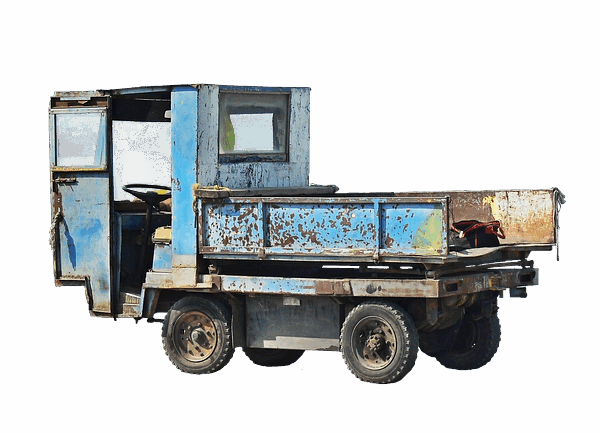Semi Trucks: An In-Depth Exploration
Introduction
In the vast arena of transportation and logistics, semi trucks, or tractor-trailers, stand as giants, playing a pivotal role in moving goods across continents. This comprehensive article aims to unravel the intricate world of semi trucks, exploring their evolution, global impact, technological innovations, regulatory framework, and their enduring significance in shaping modern supply chains. By delving into these aspects, we will equip readers with a profound understanding of this essential mode of transport.
Understanding Semi Trucks: Unveiling the Giant
Definition: A semi truck, also known as a tractor-trailer or rig, is a powerful commercial vehicle designed for long-distance transportation of cargo. It consists of two main parts: the tractor (or prime mover), which is the engine and cab combination where the driver operates, and the trailer, a flatbed or containerized structure that carries the load.
Core Components:
-
Engine: The powerplant is typically a diesel engine, known for its torque and efficiency, capable of producing substantial horsepower to tow heavy loads over long distances.
-
Cab: The driver’s compartment, designed with comfort and safety in mind, houses advanced controls and technology for navigation and communication. Modern cabs often feature ergonomic seating, climate control, and entertainment systems.
-
Transmission: Semi trucks utilize manual or automated transmissions to transfer power from the engine to the wheels, enabling smooth and efficient gear changes during towing.
-
Trailer: The trailer is the workhorse of the semi truck, available in various configurations like flatbed, van, or containerized (intermodal) designs. It provides a secure platform for transporting goods, which can range from raw materials to finished products.
Historical Context:
The development of semi trucks traces back to the early 20th century when the transportation industry sought more efficient ways to move goods. In the 1930s, the introduction of combination vehicles, where the tractor and trailer were designed to work seamlessly together, revolutionized trucking. This era also saw the rise of long-haul trucking companies, shaping the industry’s landscape. Over time, advancements in engine technology, aerodynamics, and safety features have transformed semi trucks into the versatile and powerful machines they are today.
Significance:
Semi trucks are a cornerstone of global supply chains, enabling the efficient movement of goods between countries and continents. They are responsible for transporting a significant portion of world trade, including:
-
Raw Materials: From mining operations to manufacturing hubs, semi trucks ensure the timely delivery of raw materials like steel, lumber, and coal.
-
Manufactured Goods: Playing a crucial role in just-in-time inventory systems, they transport finished goods from factories to distribution centers and eventually retail outlets.
-
Perishable Items: Specialized refrigerated trailers maintain optimal temperatures for perishable goods like food, pharmaceuticals, and chemicals during transit.
Global Impact and Trends
The influence of semi trucks extends far beyond national borders, shaping international trade and economic growth.
International Trade Facilitation:
-
Efficient Logistics: Semi trucks have revolutionized cross-border transportation by offering efficient, cost-effective logistics solutions. They can navigate long distances with relative ease, connecting remote production sites to global markets.
-
Standardized Containers: The adoption of intermodal containers, popularized by the shipping industry, has further enhanced semi trucks’ versatility. Containers allow for seamless transfer between modes of transport, including sea, rail, and road, streamlining international trade processes.
Regional Variations:
-
North America: The United States and Canada have some of the most developed trucking industries globally. Advanced infrastructure, well-maintained highways, and a robust logistics network support efficient semi truck operations.
-
Europe: With its dense population and extensive internal market, Europe relies heavily on semi trucks for intra-EU trade. Strict regulations and driver safety standards ensure high-quality operations.
-
Asia: Rapid industrialization in countries like China and India has led to a surge in demand for semi trucks to support domestic and international trade.
Emerging Markets:
The expansion of e-commerce and the digital economy has driven the need for efficient last-mile delivery, prompting investments in semi truck technologies and infrastructure in emerging markets. Countries with growing economies are focusing on improving road networks and adopting modern logistics practices to cater to increasing demand.
Economic Considerations: Powering Global Trade
The economic dynamics surrounding semi trucks are complex, involving various sectors and market forces.
Market Dynamics:
-
Supply and Demand: The global semi truck market is influenced by fluctuations in supply and demand. Tight supplies, driven by high demand, often lead to price increases and vice versa.
-
Production Capacity: Major manufacturers play a crucial role in meeting demand. Capacities can be expanded during periods of high demand, but this requires significant investment.
Investment Patterns:
-
Private Equity: Private equity firms have shown interest in the trucking industry, investing in both truck manufacturing and logistics companies. These investments often focus on modernizing fleets, adopting new technologies, and improving operational efficiency.
-
Infrastructure Development: Governments worldwide are investing in highway infrastructure to support efficient semi truck operations. Improved road networks reduce travel times and fuel consumption, benefiting both carriers and shippers.
Economic Impact:
-
Job Creation: The trucking industry is a significant employer globally, providing jobs for drivers, mechanics, dispatchers, and logistics coordinators. According to the American Trucking Associations, the U.S. trucking industry supports over 7 million jobs.
-
GDP Contribution: Semi truck transportation contributes substantially to national economies by facilitating trade and supporting various industries. In the U.S., for instance, the freight transport sector accounts for approximately 2% of GDP.
Technological Advancements: Propelling Forward
Technological innovations are at the forefront of transforming semi trucks into smarter, safer, and more efficient machines.
Engine Technology:
-
Diesel Engines: Modern diesel engines feature advanced turbos, common rail fuel injection, and electronic controls, resulting in improved power output and reduced emissions.
-
Alternative Fuels: There is a growing trend towards adopting alternative fuels like liquefied natural gas (LNG) and electricity to reduce the carbon footprint of semi trucks. Electro-hybrid and fuel cell technologies are also being explored.
Aerodynamics:
-
Streamlined Designs: Aerodynamic improvements, such as sleek cab designs, fairings, and advanced wheel well covers, minimize drag, improving fuel efficiency and reducing operating costs.
-
Wind Tunnel Testing: Advanced wind tunnel testing facilities enable engineers to optimize vehicle design, ensuring compliance with ever-stringent aerodynamic standards.
Safety Features:
-
Collision Avoidance Systems: Semi trucks are now equipped with advanced driver assistance systems (ADAS) like forward collision warning, lane departure warning, and adaptive cruise control to enhance safety on the road.
-
Electronic Stability Control (ESC): ESC helps prevent rollovers and maintains vehicle stability during critical maneuvers, improving overall driving safety.
Telematics and Connectivity:
-
Real-Time Tracking: Telematics systems enable real-time tracking of semi trucks, optimizing routes, improving driver behavior, and enhancing fleet management efficiency.
-
Internet of Things (IoT): IoT sensors and connectivity allow for advanced diagnostics, predictive maintenance, and remote monitoring, reducing downtime and operational costs.
Policy and Regulation: Navigating the Legal Landscape
The operation of semi trucks is subject to stringent policies and regulations aimed at ensuring safety, environmental protection, and fair competition.
Safety Regulations:
-
Vehicle Standards: Organizations like the National Highway Traffic Safety Administration (NHTSA) in the U.S. set standards for vehicle safety, including crashworthiness, lane departure systems, and brake performance.
-
Driver Training: Rigorous driver training programs are mandated to ensure competent and safe operation of semi trucks. These programs cover various topics, from basic driving skills to advanced safety practices.
Environmental Policies:
-
Emissions Standards: Stringent emissions regulations, such as those set by the Environmental Protection Agency (EPA) in the U.S., govern the maximum allowable emissions from diesel engines.
-
Fuel Efficiency: Initiatives like the SmartWay Transport Program encourage fuel-efficient operations and provide incentives for carriers who meet specific efficiency targets.
Labor Laws:
-
Driver Hours of Service: Federal regulations limit driver work hours to ensure adequate rest and prevent fatigue, enhancing safety and driver well-being.
-
Minimum Wage and Benefits: Labor laws protect semi truck drivers’ rights to fair wages, benefits, and working conditions, fostering a professional trucking industry.
Challenges and Criticisms: Overcoming Obstacles
Despite its numerous advantages, the semi truck industry faces several challenges and criticisms that demand attention and innovative solutions.
Challenges:
-
Driver Shortage: The trucking industry globally is grappling with a shortage of qualified drivers, attributed to factors like low pay, demanding work schedules, and the perception of the job as less attractive compared to other sectors.
-
Regulatory Compliance: Staying compliant with numerous regulations across different jurisdictions can be complex and costly for carriers, particularly small businesses.
-
Environmental Concerns: While strides have been made in reducing emissions, semi trucks still contribute to air pollution and climate change, prompting calls for more sustainable transportation solutions.
Criticisms:
-
Safety Concerns: Despite improvements, semi trucks remain involved in a significant number of accidents, especially at intersection points and during poor weather conditions. Addressing these issues is crucial to enhance road safety.
-
Noise Pollution: The idling of diesel engines at rest stops and truck stops contributes to noise pollution, impacting local communities. Implementing quieter engine technologies and stricter idling regulations can mitigate this issue.
Case Studies: Real-World Success Stories
Case Study 1: Efficient Last-Mile Delivery in Urban Environments
A major e-commerce company in the U.S. implemented a semi truck fleet equipped with advanced telematics and autonomous driving technology for last-mile delivery within urban centers. This strategy reduced delivery times, improved customer satisfaction, and lowered operational costs. The use of smaller, more maneuverable trucks tailored to city streets also addressed noise and traffic congestion concerns.
Case Study 2: Cross-Border Logistics Efficiency
A multinational logistics company optimized cross-border transportation between North America and Europe by implementing a standardized intermodal system. By using containers that could be seamlessly transferred between modes of transport, they reduced demurrage times, lowered handling costs, and improved overall supply chain efficiency.
Case Study 3: Sustainable Long-Haul Transport
A Canadian trucking company pioneered the use of liquefied natural gas (LNG) powered semi trucks for long-haul routes. This transition from traditional diesel engines resulted in significant reductions in greenhouse gas emissions, positioning the company as an environmental leader in the industry.
Future Prospects: Charting New Courseways
The future of semi trucks is brimming with potential growth areas and emerging trends that will shape the industry’s trajectory.
Growth Areas:
-
Autonomous Trucks: The development of autonomous trucking technology promises to revolutionize the industry, improving safety, efficiency, and reducing labor costs. While challenges remain, pilot projects and partnerships between tech companies and carriers indicate a promising future.
-
Electric and Alternative Fuel Vehicles: With growing environmental concerns, there is a surge in interest in electric and alternative fuel semi trucks. Battery technology advancements and government incentives are driving this transition, aiming to reduce the carbon footprint of trucking operations.
Emerging Trends:
-
Connected Vehicles: The integration of 5G and IoT will enable fully connected semi trucks, facilitating real-time fleet management, predictive maintenance, and advanced safety features.
-
Data Analytics: Advanced data analytics will play a pivotal role in optimizing routes, predicting traffic patterns, and enhancing supply chain visibility, leading to cost savings and improved customer service.
Strategic Considerations:
-
Sustainability: Carriers will need to embrace sustainable practices, including fuel efficiency improvements, alternative fuel adoption, and route optimization, to meet evolving environmental standards and consumer expectations.
-
Digital Transformation: Embracing digital technologies, such as telematics, autonomous driving, and data analytics, will be crucial for staying competitive in the future trucking landscape.
Conclusion: Navigating Tomorrow’s Transport
Semi trucks stand as a testament to human ingenuity and our relentless pursuit of efficient transportation solutions. From their humble beginnings to the advanced machines of today, they have played an indispensable role in shaping global trade and economic growth. As we look ahead, the future holds immense potential for innovation, with autonomous driving, alternative fuels, and data analytics poised to revolutionize the industry once again.
By addressing challenges, embracing technological advancements, and navigating the complex regulatory landscape, semi trucks will continue to be a cornerstone of modern logistics, ensuring the efficient movement of goods and people worldwide. The journey ahead is filled with opportunities for growth, sustainability, and enhanced safety, promising an exciting future for this essential mode of transport.
FAQ Section: Answering Common Queries
Q: How do semi trucks contribute to economic growth?
A: Semi trucks play a vital role in facilitating global trade by efficiently transporting goods across borders, supporting various industries, and creating jobs, thereby contributing to economic growth and development.
Q: What are the environmental implications of semi truck operations?
A: While semi trucks have historically contributed to air pollution, advancements in engine technology, fuel efficiency, and alternative fuels are significantly reducing their environmental impact. Continued efforts are needed to further minimize their carbon footprint.
Q: Are autonomous semi trucks a reality, and what benefits do they offer?
A: Autonomous semi trucks are already in development and pilot stages. They promise increased safety, reduced operating costs, and improved efficiency by eliminating driver errors and optimizing routes. However, regulatory challenges and public acceptance remain key hurdles.
Q: How can the trucking industry address the driver shortage issue?
A: The industry can combat the driver shortage by offering competitive wages, improving working conditions, providing training and development opportunities, and promoting the profession as a high-tech, skilled career choice.
Q: What role does telematics play in modern semi truck operations?
A: Telematics systems enable real-time tracking, monitoring, and communication with semi trucks, optimizing routes, improving fleet management efficiency, and enhancing safety through driver behavior analysis and predictive maintenance.
Looking to register your car in California? This comprehensive guide breaks down the process step-by-step. First, understand the eligibility requirements for car registration, including vehicle condit…….
Looking to register your car in California? This comprehensive guide breaks down the process step-by-step, ensuring a smooth experience. From understanding key requirements and gathering essential doc…….
Looking to register your car in California? This comprehensive guide will walk you through the process, ensuring a smooth transition. From understanding key requirements for California car registratio…….
Looking to register your car in California? This comprehensive guide walks you through the entire process, from understanding key requirements to choosing the best registration method. Learn how to ga…….
Looking to register your car in California? This comprehensive guide walks you through the process, ensuring a smooth experience. We break down the essential requirements, from understanding necessary…….
Looking to register your car in California? This comprehensive guide breaks down the process step-by-step. From understanding essential requirements to securing your unique vehicle identification numb…….
Looking to register your car in California? This comprehensive guide walks you through the entire process, from understanding key requirements to obtaining your license plate. We break down each step,…….
Looking to register your car in California? Navigating the process can seem daunting, but we’ve got you covered. This guide breaks down the steps, from understanding key requirements for car registrat…….
Looking to register your car in California? This comprehensive guide breaks down the process step-by-step. From understanding key requirements and gathering essential documents, to verifying your Vehi…….
“Looking to register your car in California? This comprehensive guide walks you through the process step-by-step, ensuring a smooth experience. From understanding key requirements and gathering essent…….









